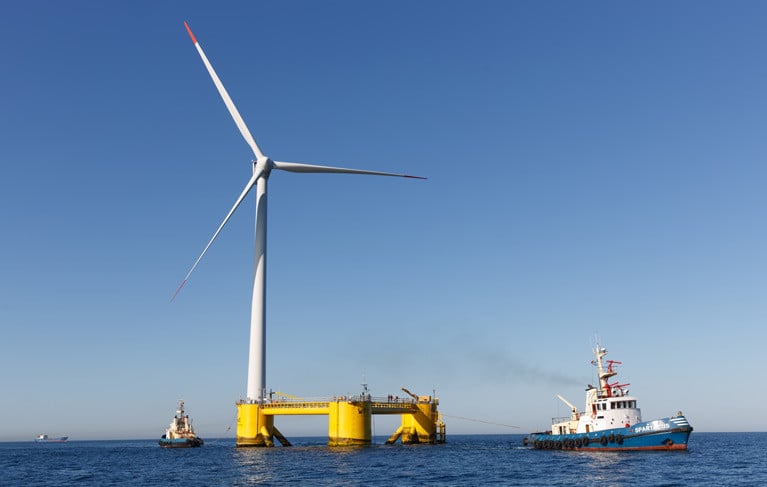An Irish renewable energy company is exploring the development of this island's first floating offshore wind farm close to the Kinsale gas field.
Youghal company Simply Blue Energy is already involved with French giant Total in a project to build one of the world’s largest floating offshore wind farms in the Celtic Sea off Pembroke in Wales.
The company has applied for a license to conduct initial site investigations in an area close to the Kinsale gas field which it believes may sustain between seven and 67 wind turbines on completion.
If approved, it would be Ireland’s first floating offshore wind farm.
Kinsale gas field is currently being decommissioned, and Simply Blue Energy says that a floating wind project could generate enough electricity to power the equivalent of 803,000 Irish homes.
Simply Blue Energy was founded in 2011 by Sam Roch-Perks, a Cork-born engineer and property developer. It focuses on energy and aquaculture projects and has offices in Cornwall, Pembroke, Edinburgh and Co Cork.
The new Programme for Government has raised a target of 3.5 gigawatt (GW) energy production from offshore wind by 2030 to five GW, and specifies the Irish Sea and Celtic Sea for development.
However, space for fixed offshore wind projects may run out in the Irish and Celtic Seas, due to the proximity of the 50-metre contour to the coast.
Floating offshore wind technology allows turbines to be deployed in depths of over 60 metres.
The Emerald project, as the Kinsale development is known, aims to deploy floating turbines in water depths of around 85 to 90m, over 35km from the coast, according to the company.
The world’s first commercial floating wind farm, the 30 MW Hywind Scotland project developed by Norwegian energy company Equinor (formerly Statoil) and Masdar off Aberdeen, was commissioned in 2017.
Simply Blue Energy managing director Sam Roch Perks said that Ireland has “massive unrealised potential for offshore wind energy production, particularly on the south and west coasts, and state of the art floating wind technology is the key to unlocking that potential”.
“With a sea area ten times that of our landmass, we have a chance to catch and become a leader in offshore wind energy production both in Europe and globally, allowing us to become the “Green Gulf” of renewable energy,” he said.
Marine Renewables Industry Association (MRIA) chairman Peter Coyle, representing emerging offshore renewable technology, welcomed Simply Blue Energy’s announcement.
Simply Blue Energy’s separate Celtic Sea project with Total involves developing a 96 megawatt (MW) floating wind farm in 70 metres of water about 45km off Pembroke in the Celtic Sea.
It has been named Erebus – both the Greek mythological son of Chaos and name of one of Sir John Franklin’s ill-fated North-West passage ships which had been built in Pembroke dockyard in Wales and disappeared in 1848.
The project involves mounting 8 to 12MW turbines on semi-submersible “WindFloat” platforms supplied by Principle Power, with generated energy feeding into an established grid connection at Pembroke.































































